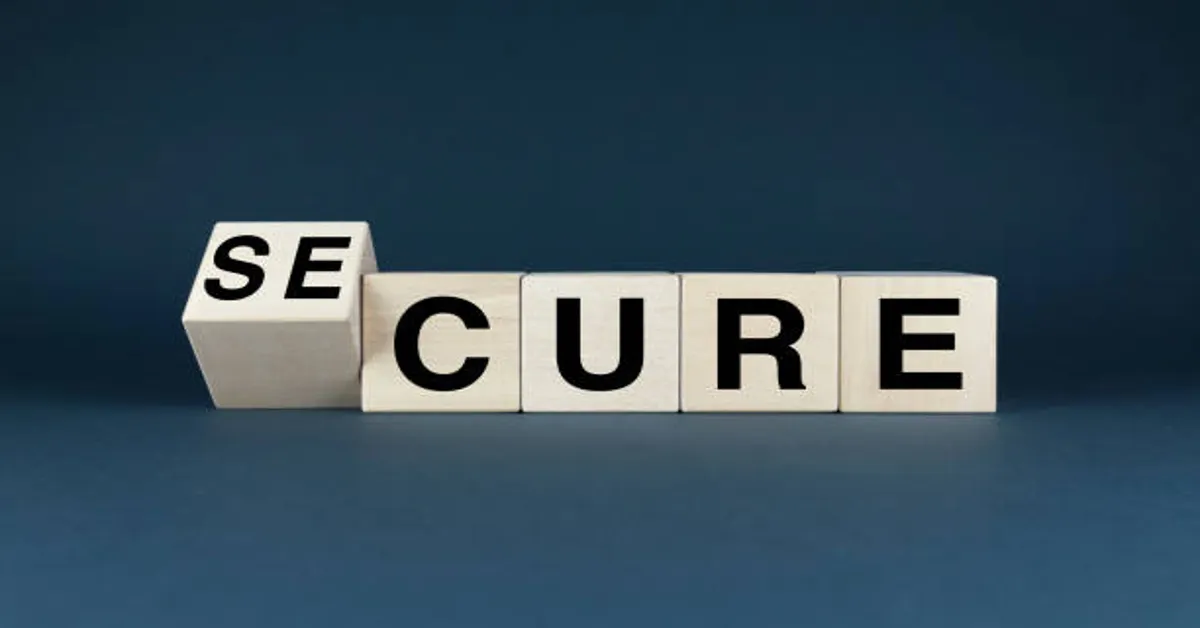Introduction
The idea of a secure life is something almost everyone desires, yet it can mean different things to different people. For some, it’s about financial stability; for others, it’s about emotional safety, strong relationships, or physical well-being. At its core, a secure life encompasses a balanced combination of these elements, enabling a person to live without constant fear or instability. Security does not imply living without any challenges—life inevitably presents obstacles—but rather having the tools, mindset, and structures in place to face those challenges without being thrown into chaos. Achieving a secure life is not a one-time task; it’s a continuous process involving intentional planning, wise decision-making, and the nurturing of healthy habits. This article explores practical, real-world strategies to help you build a life that feels stable, safe, and fulfilling.
Understanding What “Secure Life” Truly Means
When we hear the phrase “secure life,” our minds often jump to money—having enough savings, paying bills comfortably, or affording the lifestyle we want. While financial health is undeniably a crucial part of security, it is only one piece of the puzzle. True life security extends far beyond bank accounts and investments. It also includes physical health, emotional resilience, supportive relationships, a safe environment, and the confidence that comes from self-reliance and preparedness. A secure life involves freedom from unnecessary worry about the basics—where you will live, how you will support yourself, how safe you are physically—and the mental clarity to focus on higher goals, passions, and contributions to society. Without addressing all these aspects together, life security can remain fragile.
Financial Security: The Foundation of Stability
Financial security plays a foundational role because it directly influences almost every other aspect of life. Without it, stress levels rise, decision-making becomes reactive instead of strategic, and the capacity to plan for the future diminishes. Building financial security starts with a realistic understanding of income, expenses, and savings. Budgeting is not just a discipline but a form of empowerment, allowing you to see clearly where your money goes and where adjustments can be made. Creating an emergency fund is critical—it’s the financial cushion that prevents unexpected expenses from turning into crises. Over time, wise investment strategies, such as diversified portfolios or long-term retirement accounts, can create lasting stability. However, financial security is not just about earning and saving; it’s also about responsible spending, avoiding unnecessary debt, and maintaining insurance coverage for health, property, and life. When these financial elements are managed with foresight, they reduce vulnerability to unexpected setbacks.
Physical Health: Protecting Your Greatest Asset
Your body is your most valuable asset because without good health, even the best financial planning or emotional stability can feel meaningless. Physical security begins with preventive care—regular medical check-ups, a balanced diet, and sufficient physical activity. A secure life requires energy and mobility, both of which depend heavily on maintaining a healthy lifestyle. Exercise not only improves physical endurance but also boosts mood, cognitive function, and stress resilience. Proper nutrition supports immune function and reduces the risk of chronic diseases, while adequate sleep allows the body and mind to recover daily. Avoiding harmful habits such as smoking, excessive alcohol consumption, or a sedentary lifestyle also plays a key role. In addition, health security involves having access to quality healthcare, knowing your medical history, and having health insurance to shield you from catastrophic costs. When you prioritize your physical well-being, you ensure that you have the vitality to enjoy life and pursue your goals without being held back by preventable health issues.
Emotional and Mental Stability: The Inner Anchor
Financial and physical security form external pillars, but emotional and mental stability form the inner anchor of a secure life. Emotional security means having a balanced mind that can cope with challenges, adapt to change, and maintain hope in difficult situations. This doesn’t mean avoiding all stress—some stress is a natural motivator—but rather managing it effectively so it doesn’t become overwhelming. Strategies for building emotional resilience include practicing mindfulness, cultivating gratitude, seeking therapy or counseling when needed, and building strong social support networks. Mental security also involves self-awareness—understanding your values, triggers, and boundaries—and learning to communicate them effectively. When you trust your own judgment, manage your emotions, and respond rather than react to situations, you create a mental environment where peace of mind is the default rather than the exception.
Building Strong and Supportive Relationships
Humans are social creatures, and a secure life is rarely a solitary one. Relationships—whether with family, friends, or a life partner—offer emotional support, practical assistance, and a sense of belonging. However, not all relationships contribute to life security; some can actually erode it. A secure life involves surrounding yourself with people who respect your boundaries, encourage your growth, and provide mutual trust and reliability. Building strong connections requires consistent communication, empathy, and effort. Trust is the foundation; without it, relationships become sources of anxiety rather than security. Mutual respect ensures that all parties feel valued, while healthy boundaries prevent dependency or exploitation. A supportive community also acts as a safety net during personal challenges, providing both emotional comfort and tangible help when needed.
Safe Living Environment: The Physical Space of Security
Your living environment plays a significant role in your sense of safety and stability. A secure home is not just about having a roof over your head; it’s about ensuring that space is safe, comfortable, and conducive to your well-being. Physical safety includes having secure locks, functional smoke detectors, and emergency plans in case of natural disasters or other hazards. It also involves living in a community where you feel safe walking outside, where neighbors look out for each other, and where essential services are accessible. A clean and organized home environment reduces stress, while personalized touches make it feel like a sanctuary. For many, achieving housing stability—whether through home ownership or long-term rental agreements—provides peace of mind that their shelter is reliable and not subject to sudden loss.
Career Stability and Purposeful Work
A secure life often includes stable employment or a steady source of income that not only meets financial needs but also provides a sense of purpose and accomplishment. Career stability is not just about staying in one job forever; it’s about having the skills, qualifications, and adaptability to remain employable even as industries change. This can involve continuous learning, professional networking, and staying informed about market trends. Purposeful work—work that aligns with your values or contributes to a greater good—can enhance overall life satisfaction. Even if a job is not your ultimate passion, finding aspects of it that provide fulfillment or meaning contributes to emotional stability and reduces burnout. Additionally, creating multiple income streams, such as side businesses or investments, can reduce dependence on a single job and enhance financial resilience.
The Role of Preparedness and Self-Reliance
Preparedness is a cornerstone of life security because it reduces vulnerability to unpredictable events. This could mean having savings for emergencies, a stocked pantry for natural disasters, or a clear plan for health crises. Self-reliance goes hand-in-hand with preparedness—it’s about having the skills and confidence to handle challenges independently when necessary. This might include learning basic home repairs, first aid, or cooking nutritious meals from scratch. The more self-reliant you are, the less you have to depend on uncertain external resources during times of need. Preparedness also involves legal readiness—having a will, powers of attorney, and clear documentation of important information. While these steps may feel uncomfortable to think about, they can greatly reduce confusion and stress during crises.
Continuous Personal Growth: Security Through Capability
Personal growth is an often-overlooked element of a secure life. The more capable and adaptable you are, the less threatening change or uncertainty becomes. Personal growth can include learning new skills, expanding knowledge, improving emotional intelligence, and developing healthy habits. It also involves challenging yourself to step out of your comfort zone so you can handle bigger challenges in the future. A growth mindset—the belief that abilities can be developed through effort and learning—creates psychological security by turning obstacles into opportunities for development. The process of continuous improvement keeps you relevant in your career, sharpens problem-solving skills, and increases overall confidence in facing life’s unpredictability.
Balancing Security with Freedom
One misconception about creating a secure life is that it requires locking yourself into rigid routines or avoiding risks entirely. While safety is important, overprotecting yourself can lead to a stagnant, unfulfilled existence. True life security balances stability with the freedom to explore, take calculated risks, and pursue dreams. For example, financial security allows for occasional travel or investments in personal passions without jeopardizing basic needs. Emotional security means you can engage in new relationships without constant fear of betrayal. Physical security means being active in the world rather than hiding from it. The key is having a stable base that supports exploration rather than inhibits it.
Conclusion: Making Security a Lifelong Practice
A secure life is not a destination that can be reached once and for all—it is a lifelong practice of maintaining and improving various aspects of your existence. Financial planning, physical health, emotional resilience, strong relationships, a safe environment, and continuous learning are all interconnected. Neglecting one area can weaken the entire structure of your life security. The good news is that each positive step you take in one area tends to strengthen the others. A well-balanced approach ensures that when challenges arise, you can handle them with confidence and calm. Ultimately, security provides the freedom to live fully, love deeply, and pursue your goals without the constant weight of fear or uncertainty.
ALSO READ: Odia Calendar – A Complete Guide to Odisha’s Timekeeping Tradition
Frequently Asked Questions (FAQs)
1. What is the first step toward achieving a secure life?
The first step is identifying which areas of your life currently feel unstable—whether financial, health-related, emotional, or environmental—and addressing the most urgent one. Building an emergency fund, seeking medical care, or creating a safer living space can serve as strong starting points.
2. How can I maintain financial security during economic uncertainty?
Focus on controlling expenses, diversifying income sources, avoiding high-interest debt, and keeping at least three to six months’ worth of living expenses in savings. Regularly reviewing and adjusting your budget helps adapt to changing circumstances.
3. Can emotional security be developed later in life?
Yes, emotional security is a skill that can be developed at any age. It involves self-awareness, setting boundaries, practicing mindfulness, and building supportive relationships. Therapy, self-reflection, and resilience training can also be valuable tools.
4. Is it possible to have security without a high income?
Absolutely. Security comes from managing resources wisely, living within your means, and prioritizing essential needs over luxuries. A modest but well-managed income can support a highly secure lifestyle.
5. How does personal growth contribute to a secure life?
Personal growth increases adaptability, problem-solving skills, and confidence. These qualities make it easier to navigate changes, overcome challenges, and seize new opportunities without feeling destabilized.









